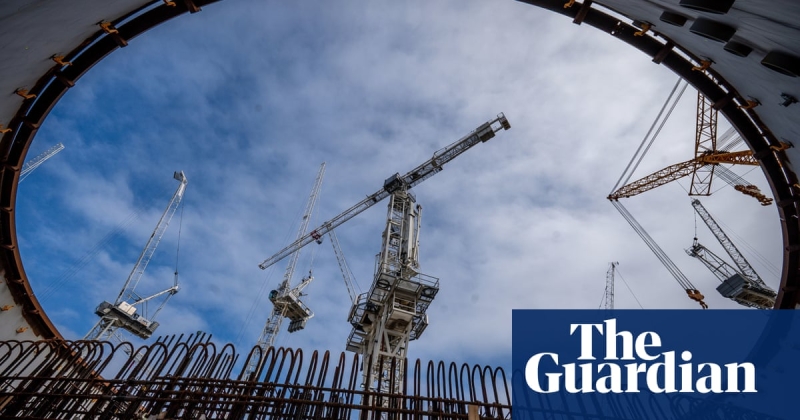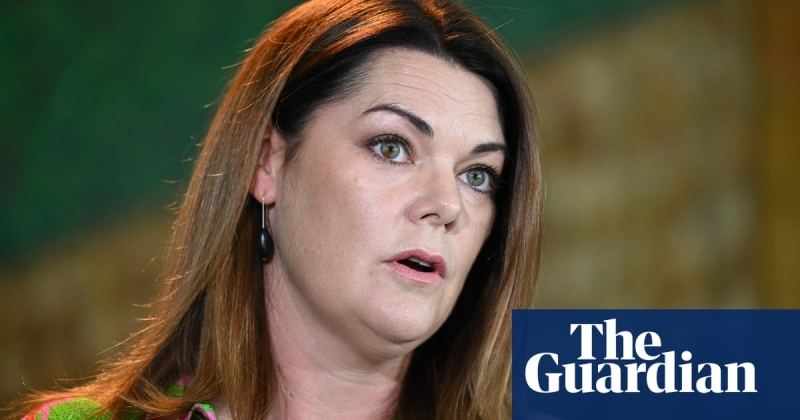Peter Dutton says building nuclear reactors will bring down power prices, but experts doubt it and say it will cost the climate too
Peter Dutton says the Coalition would slow down the rollout of renewable energy and and instead eventually spend tens of billions of taxpayer dollars to build nuclear power plants at seven sites across the country.
He claimed “power prices will be cheaper under us in the near term” and that his policy would be expected to lead to “a 44% reduction, or of that order, being passed through in energy bill relief” – that is, a dramatic and unprecedented cut in household power bills.
Does this stack up? Here’s what you need to know about the Coalition’s plans, the risks it poses to the country’s electricity supply and its climate targets.
The Coalition wants to build large nuclear reactors at the sites of five coal-fired power stations – Liddell and Mount Piper in New South Wales, Tarong and Callide in Queensland, and Loy Yang in Victoria.
Small modular nuclear reactors, which are not yet commercially available anywhere, are proposed at the sites of Northern power station in South Australia and Muja power station in Western Australia.
All the reactors would be taxpayer-funded. The Coalition claims it could have smaller units working by 2035 and the first large reactor working by 2037.
nuclear sites map
Most energy experts, including those from the CSIRO, say the Coalition’s timeline is unrealistic.
They argue it is highly unlikely Australia could do everything necessary – including creating a regulatory system, developing a skilled workforce, completing geological and environmental work and commissioning and building a nuclear reactor, with community approval – before the early 2040s, if not later.
The Coalition would also have to overturn a legislated federal ban on nuclear energy and convince the states to overturn their bans. Most state premiers and opposition leaders are opposed to introducing a nuclear energy system.
With Labor, the Greens and some independents opposed to nuclear energy, repealing federal laws would be a major obstacle.
Nationals senator Matt Canavan has claimed the Coalition was “not serious” about building nuclear and it was being backed because it “fixes a political issue”.
Many of Australia’s coal plants are old.
On average, coal plants are forced offline through unplanned outages for about 10% of the year. Australia’s electricity market operator expects 90% of coal-fired power stations to be closed by 2035 – two years before the Coalition claims its first nuclear plant would be producing power.
The Coalition’s plan would mean requiring ageing coal plants to run for longer, increasing the risk of unplanned outages unless there was significant new spending on maintenance.
Experts say promising to build taxpayer-funded nuclear plants could also lead to investors deciding not to build the solar, wind, batteries and pumped hydro currently planned, and needed now, to replace much of the electricity from coal.
The Coalition has provided no evidence to back up its claim that its proposal could bring electricity prices down.
Dutton has claimed that modelling by Frontier Economics judged the Coalition’s plan to be 44% cheaper than Labor’s policy of running the grid overwhelmingly on renewable energy, and that this meant power bills would be cut by 44%.
This claim has no basis in fact. Frontier’s own modelling report said that it had not modelled the impact of a nuclear plan on prices.
The modelling used by the Coalition is based on an electricity system producing 31% less electricity than Labor’s preferred renewables-based approach.
More than half of a household’s electricity bill is related to factors outside the Coalition’s plans, such as the cost of local poles and wires, or the costs passed on by retailers.
Overseas, particularly in western democracies, nuclear plants have become notorious for large cost blowouts and delays.
The Coalition says its plan would cost less because it would avoid having to build some of the new towers and power lines needed to connect the new solar, wind and battery farms planned across the country.
But CSIRO analysis found even if Australia had an established nuclear program with a suite of reactors, the electricity would cost at least 50% more than power from solar and wind backed by battery and other energy infrastructure needed to ensure the power grid remained reliable even when the wind wasn’t blowing and the sun wasn’t shining.
About a third of Australia’s greenhouse gas emissions come from burning coal and gas to produce electricity. Cleaning up the grid is essential to cutting Australia’s climate pollution and meeting its international commitments.
The Coalition’s plan assumes that for the next 20 years or so there would be significantly less renewable energy and significantly more electricity from coal and gas-fired power stations than currently proposed by regulators and backed by the Labor government.
Not surprisingly, this would mean higher emissions. This point was reinforced in modelling supported by the Coalition released in late 2024. It found Peter Dutton’s proposal would lead to substantially higher pollution between now and 2048 than on the current path.
Independent analysis has backed this up, suggesting the Coalition’s plan would lead to an extra 1.7bn tonnes of CO2 being emitted by 2050. This is equivalent to about four years’ worth of emissions released across the entire Australian economy.
The Coalition’s plan also assumes slower decarbonisation in other parts of the economy. It suggests fewer people would buy electric vehicles than under Labor, and fewer rooftop solar panels would be installed.
The Coalition has aligned its plan to a scenario laid out by the Australian energy market operator that is in line with global heating of about 2.6C by 2100.





